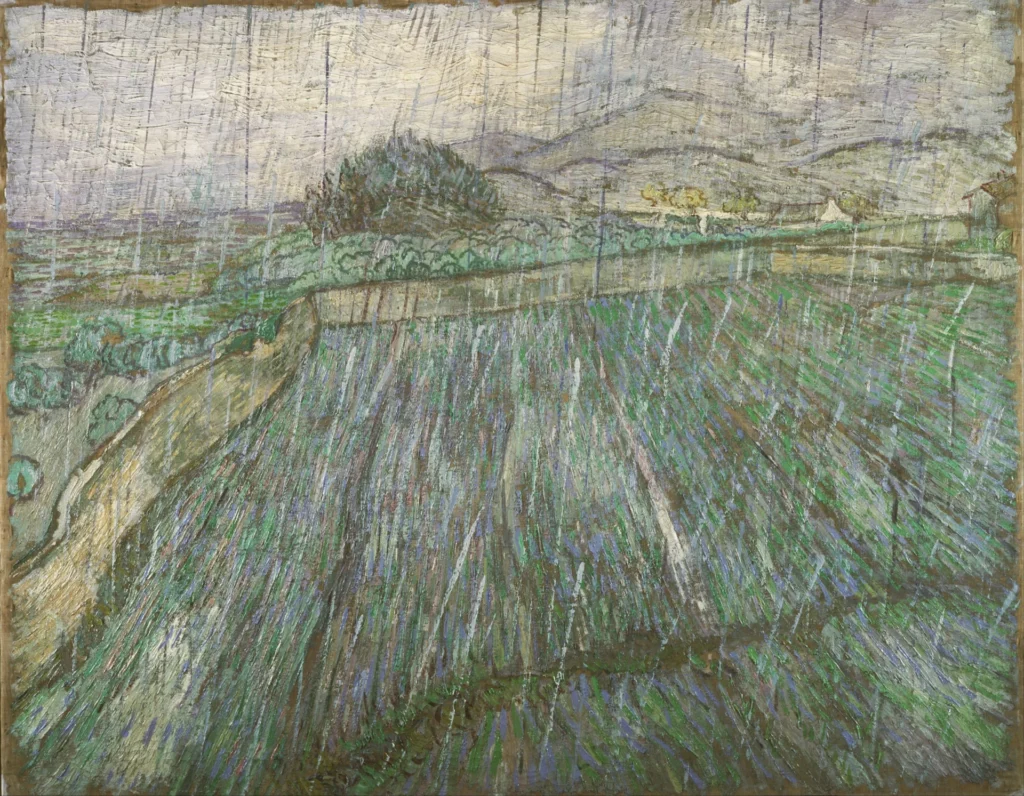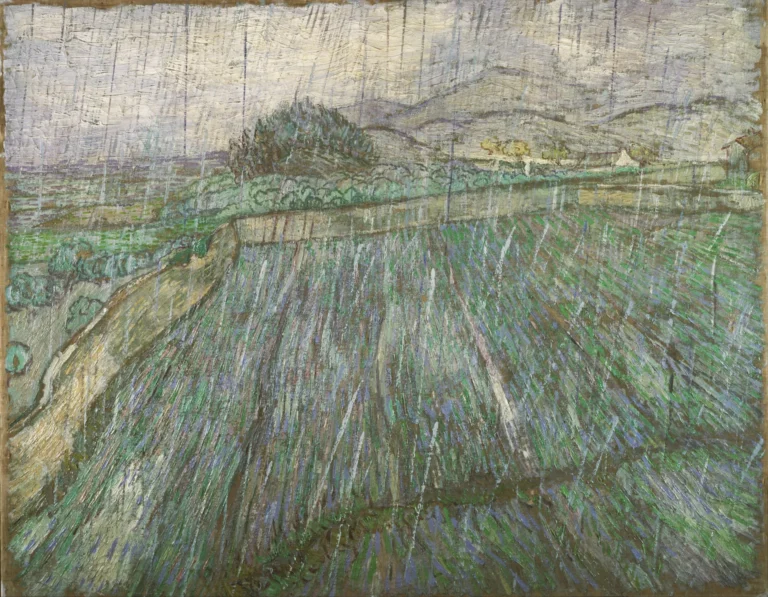Dutch - Rain
Created in 1889, Rain captures a wheat field viewed from Van Gogh's bedroom window at a Saint-Rémy-de-Provence clinic. Utilizing oil on canvas, Van Gogh employs vibrant mint-green, baby-blue, and white to represent raindrops, evoking the beauty of an October rain shower. This work reflects his admiration for Japanese prints and showcases the intense emotional experiences that characterized his mature style.
Year 1889
About the Artwork
The story behind Rain is deeply intertwined with Van Gogh's personal struggles. Painted during his stay at a mental health clinic, the work reflects not only the physical landscape around him but also his internal turmoil. The wheat field visible through his window symbolizes both limitation and a longing for freedom, unveiling his complex relationship with nature. Inspired by Japanese art, the delicate depiction of rain demonstrates Van Gogh's innovative approach to color and form, capturing fleeting atmospheric effects that resonate with viewers. Despite the difficulties he faced, this painting stands as a testament to his profound connection with the world.
Did You Know
Van Gogh was profoundly inspired by Japanese woodblock prints, which influenced his color palette and compositional style. His admiration for this art form is particularly evident in the treatment of rain in Rain.
During the time Van Gogh painted Rain, he was seeking treatment for mental health issues, which often informed his art and emotional expressions. This period of confinement became essential for much of his most influential work.
In many of his later works, Van Gogh used nature as a means of expressing his thoughts and emotions. The enclosed wheat field in Rain reflects not only the beauty of the environment but also his feelings of isolation during his stay at the clinic.










